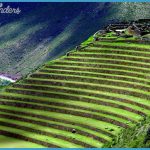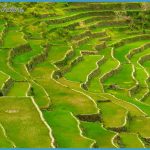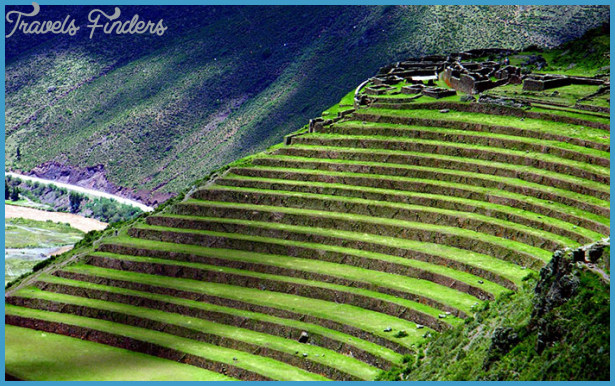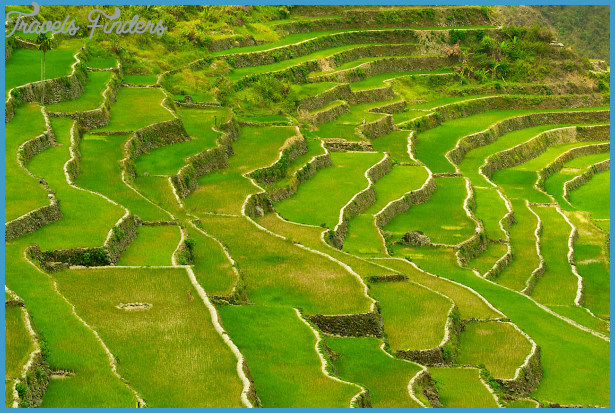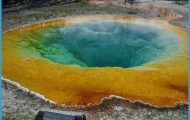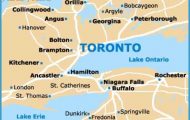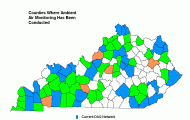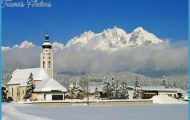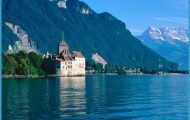The Mammoth area is underlain at depth by limestones, that is, hardened sediments consisting mostly of calcium carbonate [GEO.24]. Hot water dissolves the limestone from deep below Mammoth and carries it through cracks to the surface. As the water rises, the pressure confining it decreases, the water cools, and hot gas, mostly carbon dioxide, escapes. The water becomes supersaturated with calcium carbonate, which precipitates out on the surface as travertine. You might ask where all this hot water comes from, since Mammoth lies outside the Yellowstone caldera and not over the Yellowstone hot spot. The water may run along a fault in the earth from Norris Geyser Basin, or part of it may percolate here underground from the Gallatin Range. Geochemists have proven that this water has been underground for at least 60 years, probably considerably longer. Magma deep in the earth supplies the heat to maintain the water in Mammoth’s hot springs at about 163°F (73°C) year round. Mammoth is unique in the park because of its underground limestone; Yellowstone’s geyser basins, on the other hand, sit atop igneous rocks, that is, rocks that are or once were molten.

